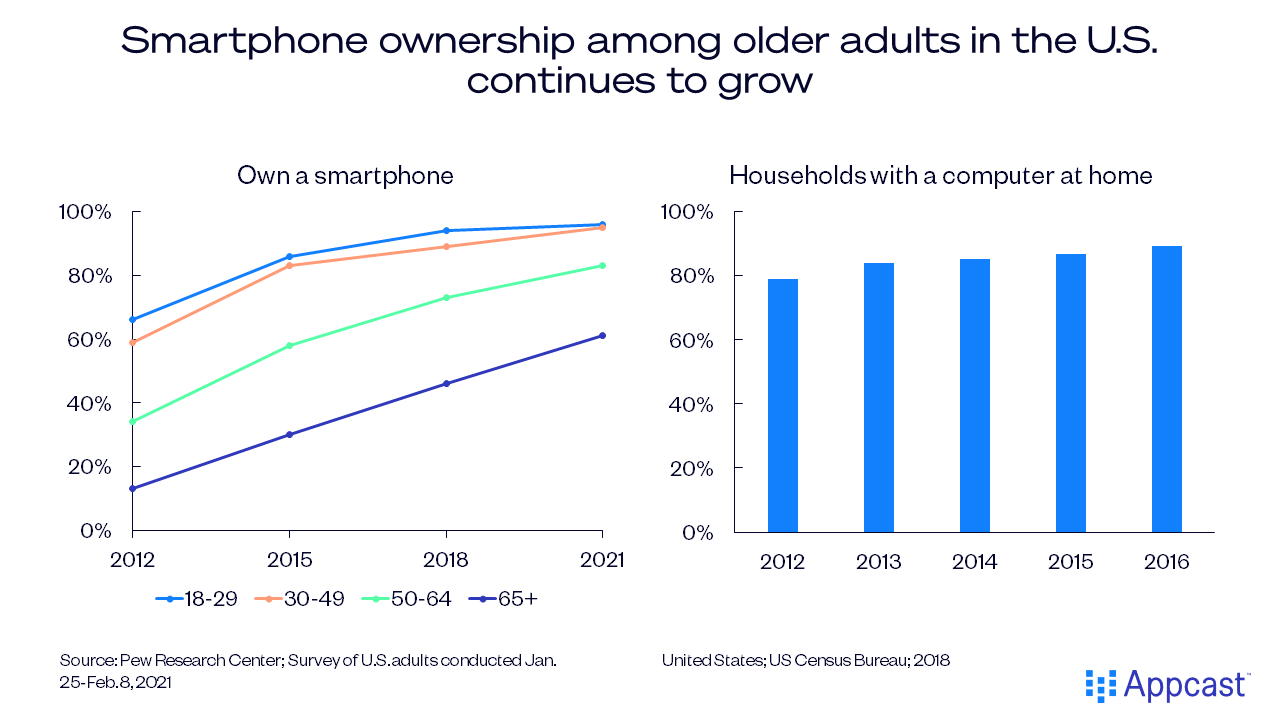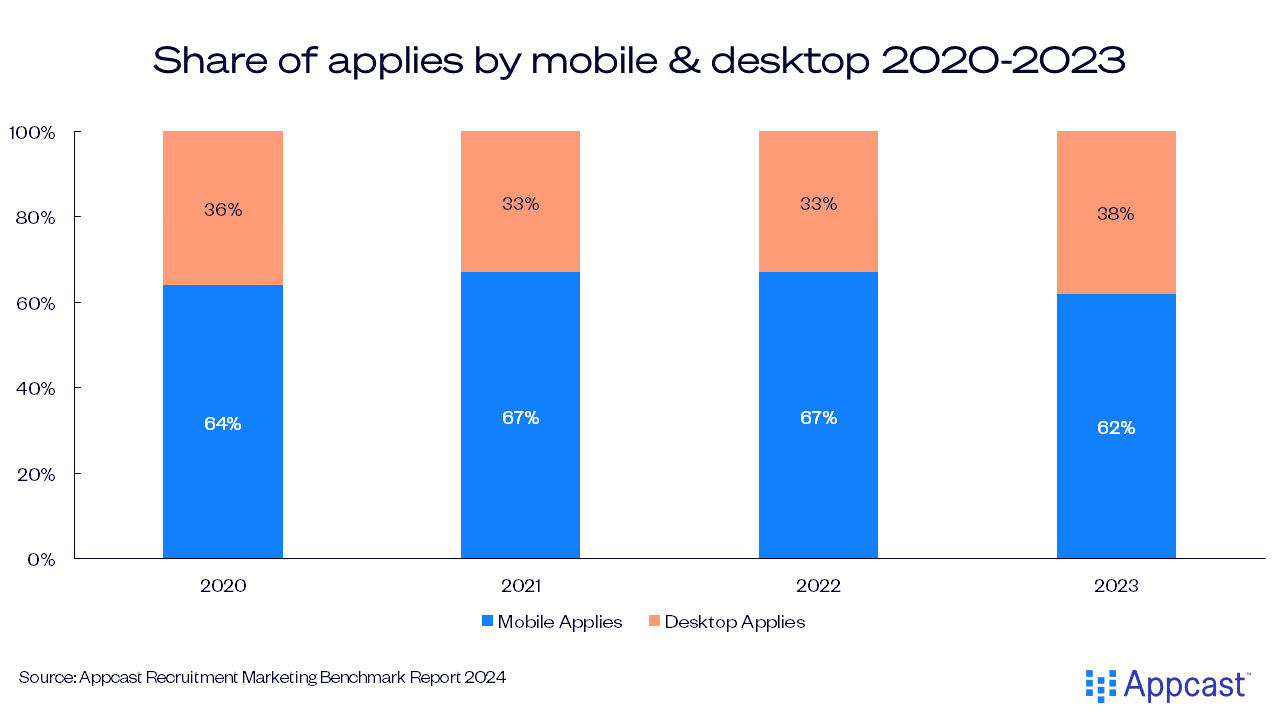As technology continues to shape the job-search process, traditional methods have undergone a significant evolution. Understanding the preferences and behaviors of job seekers has become crucial for employers.
Access to the Internet is expanding globally across all age groups. In 2016, nine out of 10 U.S. households had a computer at home. Today, younger individuals are more likely to own a smartphone than a computer. A 2021 survey by the Pew Research Center indicates that today nearly every individual aged 18 to 49 and more than 80 percent of those aged 50 to 64 in the U.S. own a smartphone. The average time spent daily on a phone has also been increasing steadily within the past years, reaching a total of 4 hours and 30 minutes in April 2022.

Especially in their free time, people are more likely to use their smartphones than their computers. In the third quarter of 2023, around 95% of global users accessed the internet via smartphones, compared to 62% via laptop or desktop. Accordingly, it makes sense that more and more companies offer mobile applications via app, one-click, or a mobile-optimized application form. As found by a survey from The Stepstone Group conducted in 2022, 70 percent of job seekers think that in the future, the application process will be so standardized that one click or swipe via smartphone will be sufficient to apply for a job.

Today, around two thirds of applies are made from mobile devices. While we have seen a consistent increase in mobile applies, 2023 marks the first year of a slight decline. It’s possible that job seekers approached the search more diligently in 2023, as opportunities fell compared to the year before.
When examining the distribution of mobile applications by job function, gig workers are notably prominent, with 86% of applications submitted using mobile devices. Additionally, individuals using their smartphones to apply for jobs are more inclined to be employed in the hospitality (72%), transportation (72%), real estate (69%), and warehousing and logistics (69%) sectors. Conversely, those with the highest likelihood of applying via desktop tend to be employed in roles requiring regular desktop computer use, like technology, legal, and finance. Nevertheless, application rates, which denote the proportion of job seekers applying for a job after clicking on it, were generally higher from desktops than from mobile devices.
Over time, job application methods have evolved from traditional letters to e-mail and online platforms. The global rise in smartphone usage has sparked a notable shift in device preferences. Despite a slight decrease in mobile job applications in 2023, a significant number of job seekers, particularly those in the gig economy, prefer using mobile devices for their job applications. However, desktop applications remain prevalent in sectors that heavily rely on computer usage, such as tech and finance. Employers should tailor their recruitment strategies to match the preferences and behaviors of their target candidates, reducing friction in the application process, and considering factors such as age, profession, and preferred methods of application.
For more recruitment marketing insights, check out our annual Recruitment Marketing Benchmark Report!


